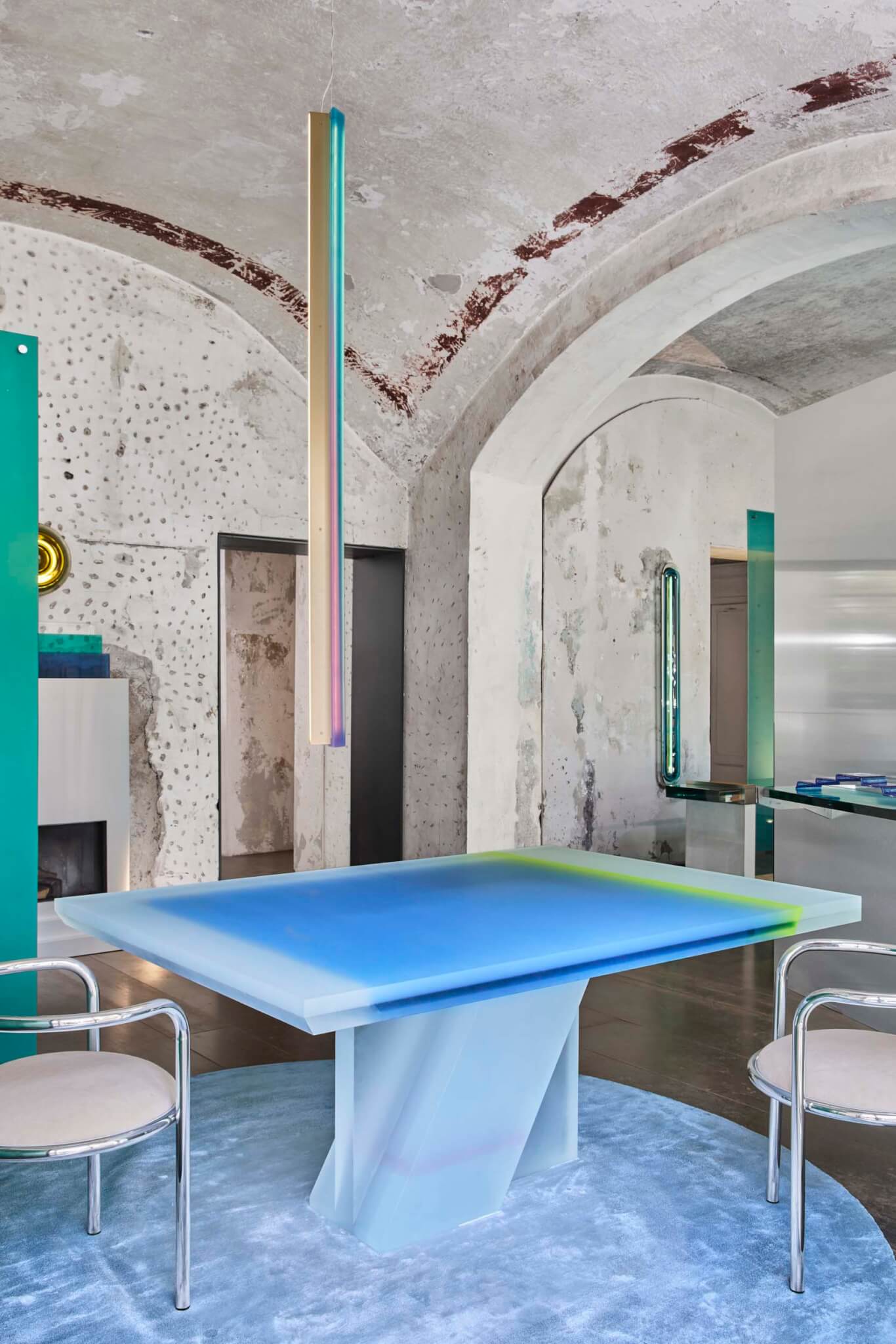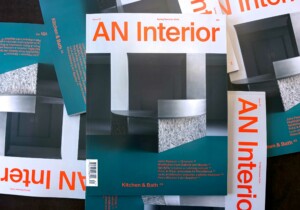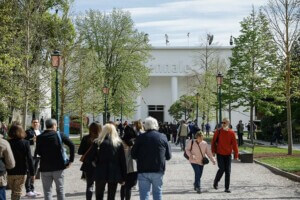One day, someone—not me—will have to write the definitive historico-critical account of Milan’s Salone del Mobile. It would tell of a furniture fair that began, in 1961, as a booster shot for Italy’s manufacturing sector and then grew into a staple of the global culture circuit: the Coachella of chairs. This is not that story, but rather a view from the ground of the goings on about Milan.
Was There New Stuff?
Yes, and occasionally it was even good. Near Porta Venezia, designer Grace Prince was back with another pop-up show of her haunting, delicate, and conceptually daring pieces, all work recently conceived during a fellowship in Florence. “It was a great time to reflect and try something new,” said Prince, adding that she’s already considering a show for next year. Another returnee, Capsule, put on a pair of shows in town; at one, Hydro’s recycled-aluminum pieces, by Philippe Malouin and others, were a particular highlight. And way out in the northern suburbs, perennial favorite Alcova was back with a new installment of its contemporary-furniture-in-an-offbeat-location series: When people entered the smaller of two historic villas, they saw co-curator Joseph Grima seated in the living room, seemingly welcoming the arriving hordes. “Actually, I’m resting,” he confessed. Though the setting was more conventional than last year’s, the selection of work from young and emerging designers—among them a marvelous basement maze from room-partition experts Dooor and a charming (and playable!) ceramic mini golf course from a collective including Diego Faivre and Pierre Castignola—was consistently strong.
Was There Weird Stuff?
Golly, was there. Street-art spectacularist JR created a billboard installation in front of Stazione Centrale that made it appear—rather convincingly, from a distance—as though an Alpine mountain range had sprung up in front of the Beaux Arts facade. A good deal more subtle, but no less offbeat, was Draga & Aurel’s show at Spazio Rossana Orlandi, a delightfully wacky wonderland of a domestic interior suggesting a mashup of art deco, PoMo, and Disneyland’s Magic Mountain ride. And then there was the epicenter of all weirdness, from the master of weird himself: David Lynch, who came to the fair in the form of a bizarre “Thinking Room” comprising a large chair, some drawing utensils beside it, and photos on the wall of a butchered carcass and an old steel mill. What was it all about? Sadly, the director was not on hand to explain, though via video screen, Lynch did proffer a number of gnomic pronouncements: “Humans are always involved with Being,” he said. “That’s why they’re called human beings.”

Were There Famous People?
Depends on one’s definition, but yes, several. The usual complement of product-making marquee names were on the scene: Philippe Starck showed off his recycled coffee-cup chairs for Kartell; Marcel Wanders was at the launch for his MOOOI brand—wearing a baggy suit no less, as sure a sign as any that the tide has turned in international menswear. Lord Norman Foster, still in full Blofeld regalia, was spotted chatting with Salone president Maria Porro in the VIP lounge, but other than that, architects of almost any stature were notably absent, as the once-prevalent trend of co-branded product launches continues to dwindle (in tandem, one senses, with the starchitect phenomenon), leaving only Snøhetta’s new pendants for Lodes to hold the fort. Just the same, two nonsectarian big shots were in attendance, as well as one honest-to-goodness celebrity. At a reading hosted by fashion brand Miu Miu, novelists Jhumpa Lahiri and Sheila Heti showed up for a panel conversation, likely innocent of the knowledge that a gigantic design fair happened to be going on nearby. And at a cocktail for ubiquitous American studio Rockwell Group, actress Jane Krakowski appeared on the arm of the eponymous host, her companion David Rockwell. Reached for comment as she was attempting to procure a glass of prosecco, the Emmy-winning star of NBC’s 30 Rock responded, “Excuse me.”
Was There Political Stuff?
Not such as one might notice. Among the featured designers at Alcova, Ukraine’s Viktoria Yakusha brought a pointed meditation on her country’s loss of cultural patrimony since the onset of war through a set of vases and furniture based on artifacts looted by Russian troops. “The only thing that I can do as a designer is to tell stories,” she said. But most of the fare around town was unlikely to cause anyone any real offense. In a notable coda, the Venice Art Biennale—occurring almost simultaneously with Salone for perhaps the first time ever—was also reported to be almost entirely protest-free this year, save for a brief pro-Palestinian demonstration in the Giardini and a statement from the artist representing Israel that she would not open her show until a ceasefire had been reached (a position somewhat undermined when she subsequently led select private tours of her installation). Evidently, the heated discourse stateside is not causing Italian temperatures to rise. Yet.
Were There Parties?
Is the Pope Argentinian? The Eames Institute hosted a dinner at hot-to-trotter Milanese restaurant Trippa, which lived up to the name but provided vegan options for the faint of (gulp) heart. At the historic Villa Necchi, T Magazine welcomed the good and great, and then purportedly turned away a number of its own advertisers when the quarters got too close for elbow-rubbing. Most importantly, a disreputable scandal sheet known as Dezeen—in conjunction with another, equally scurrilous organ with the effrontery to call itself The Architect’s Newspaper—sponsored, along with Novità, an “America Night” party at Super Club in the basement of the Superstudio design complex in the Zona Tortona, the first time anything interesting has happened in the once-happening neighborhood since Daniel Arsham was just a sweet kid with a plaster fetish. Historians, take note: It could be the start of a comeback.
Ian Volner is a Bronx-based writer covering architecture, design, and urbanism.
Hear something? Say something. Email us: eavesdrop@archpaper.com.










